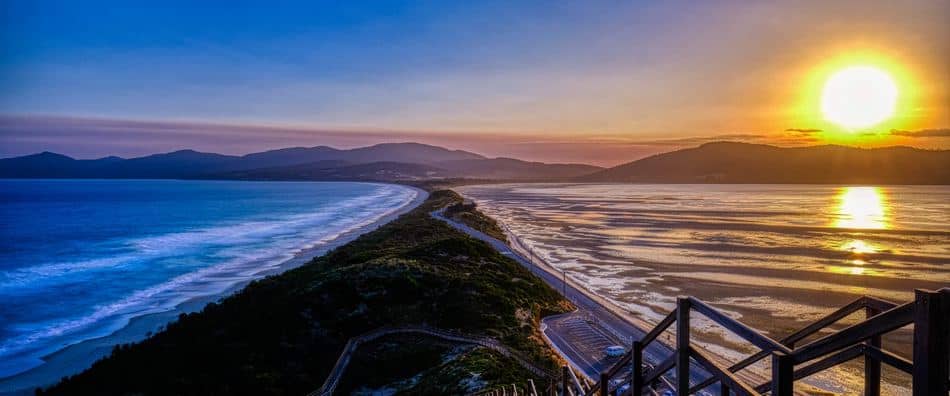Tasmania is a beautiful island off Australia’s southern coast that is famous for its southern lights. You may have heard of the northern lights, but you probably haven’t heard of the southern lights. Southern lights are standard in Tasmania, especially at certain times.
The best time to see the Tasmanian aurora is during the winter months (May to September), because the days are shorter, which makes it easy to spot the lights at night. In Hobart, the capital city and largest city in Tasmania, the southern lights are best seen between June and August.
The possibility of seeing the southern lights of Tasmania cannot be precisely predicted until a few days in advance. For information on the best time to see Tasmania’s southern lights, as well as how to get a good view, keep reading this article!
The Best Time To View Tasmania’s Southern Lights
Although the southern lights are elusive, and we cannot predict when the solar winds will push the lights out to get the brightest shine, the winter season is usually the best time to witness the natural fireworks in the sky firsthand.
As the southern nights appear quickly and stay longer than usual, it spreads out the southern lights in the sky.
There is no one who can say for certain when the southern lights will appear in Tasmania; the only thing that can be used as a guide is the time range in which they have appeared in the past.
However, consistent observers of the Tasmanian southern lights have suggested the months of May through September as the best time to view the phenomenon. At this time of year, the southern lights have a more vivid and brilliant appearance.
A space tourist claims that the best time to see the southern lights in Hobert, Tasmania’s capital, is between June and August.
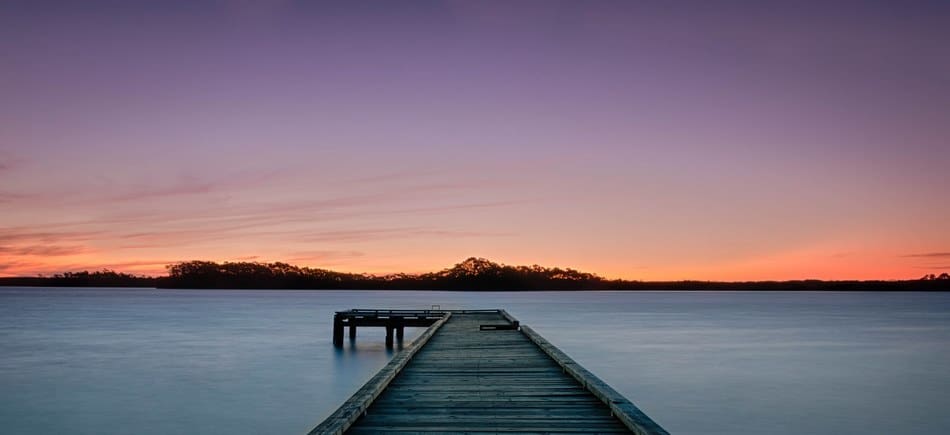
What Causes The Southern Lights In Tasmania?
The southern lights also referred to as the Aurora Australis , are a phenomenon that can only be seen in Tasmania, which is located in the southern hemisphere. It occurs in the sky when charged particles from the sun form solar winds.
, are a phenomenon that can only be seen in Tasmania, which is located in the southern hemisphere. It occurs in the sky when charged particles from the sun form solar winds.
As the solar winds move toward the north and south poles, the particles that accompany them interact with the gasses and atoms in the atmosphere. These interactions cause beautiful sparks of light to appear in the sky.
Imagine the Southern Lights in Tasmania as Christmas fireworks that were being set off at the same time to make beautiful sparks of light in the sky in different colours. What a breathtaking sight that will be!
The southern lights of Tasmania are not produced by magic: rather, they are the result of natural phenomena. Although the southern lights in Tasmania are awe-inspiring, there are still some “doubting Thomases” who doubt the existence of this phenomenon and think it is an out-of-this-world experience.
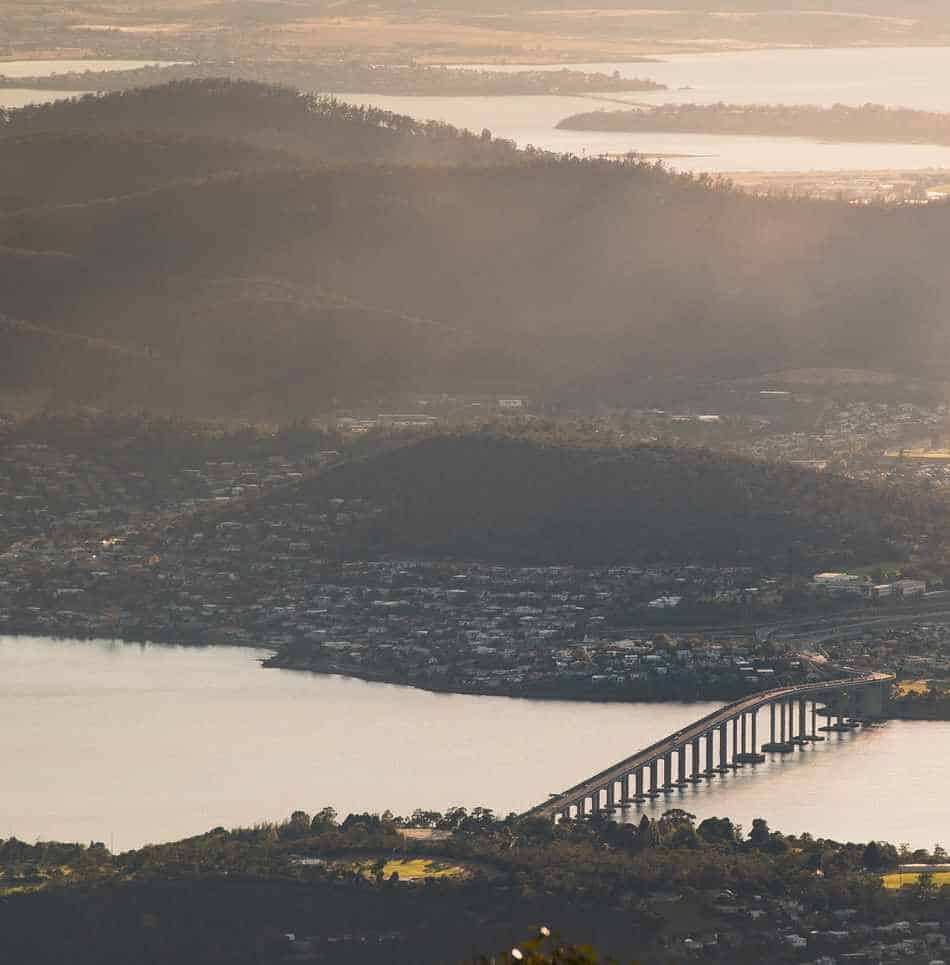
Predicting When The Southern Lights Will Appear
No one can accurately predict when the southern lights in Tasmania will appear, but the sunlight calls the shot. Space weather maps, forecasts, and predictions have proven extremely useful in predicting when and where they will occur.
Margaret Sonnemann, who started the Facebook group Aurora Australis Tasmania, said, “We only know about three days in advance if an aurora might happen, but that’s just an educated guess; we never truly know.”
You are advised to always check your weather forecast and prepare for a last-minute reservation if you want to know the precise time the southern lights will be at play.
Reasons Why The Southern Lights May Not Be Visible In The Wintertime
The winter months in Tasmania are the best time to see the southern lights, but the weather and atmosphere have to be just right for them to appear. Due to the high levels of light pollution in the air, it can be challenging to see the southern lights in Tasmania.
When it’s cloudy in the winter, the southern lights can’t be seen because they can’t be seen through the clouds. The presence of moonlight in the sky can also reduce the visibility of the southern lights.
When the weather is cloudy and the moonlight is bright, the southern lights become obscure and dim.
Where Are The Best Places In Tasmania To View The Southern Lights?
Tasmania might be the best place on Earth to see the southern lights at their most beautiful on the darkest nights, but precisely where in Tasmania? Besides knowing the best time to see the southern lights, it’s also important to know where you can get the best view.
The south side of Tasmania has better views than other regions because it is closer to the southern pole; therefore, position yourself to the south side of your viewing point to get a clear view. The southern lights in Tasmania usually begin at a height of about 100 km in the atmosphere, so you can see them forming from a flat surface on the earth.
Not sure you’re looking in the southern direction? All you need to do is to look for the Southern Cross Constellation. The following locations on the southern coast of Tasmania offer the best views:
Cockle Creek Bridge
Cockle Creek Bridge is located on Tasmania’s south coast, 120 kilometres southwest of Hobart. This is an excellent location for southern light chasers in the Hobart area.
South Arm Peninsula
You can also experience the southern lights at the South Arm Peninsula located about 40 km southeast of the Hobart area. To get a better view of the southern lights on the peninsula, head to Clifton Beach, Goat Bluff, or Cremorne Beach on the peninsula’s south arm.
Taroona Beach
Taroona Beach, located in the Taroona suburb to the south of Hobart, offers a good view of the southern lights on a night when they are expected.
Mount Nelson
On a clear night, Mount Nelson provides an excellent vantage point for viewing the southern lights. The mountain is located to the south of Hobart. You should go to the Signal Station at the top of Mount Nelson for the best view.
Eaglehawk Neck
Located on the Tasman Peninsula, about 76 km southeast of Hobart, Eaglehawk Neck provides excellent opportunities to capture the southern lights in Tasmania. From Tessellated Pavements at Eaglehawk Neck, you can see different colours in the sky, which makes for a stunning sight.
Rosny Hill
Rosny Hill is another prime location for viewing the southern lights and is only a 10-minute drive from central Hobart. Rosny Hill is accessible to the southern lights due to the presence of a golf course that blocks out light pollution. Aside from the southern lights, there are some spectacular views such as the Derwent River from the hill.
The Howrah Beach
Howrah Beach is a suburb of Clarence, and it’s a good place to see the southern lights if you don’t want to go too far from the city.
Other excellent locations in Tasmania for viewing the southern lights include Dove Lake towards Cradle Mountain, Coles Bay towards Hazards, Cape Bruny Lighthouse, Mount Wellington in Hobart, and the summit of Kunanyi, among many others.
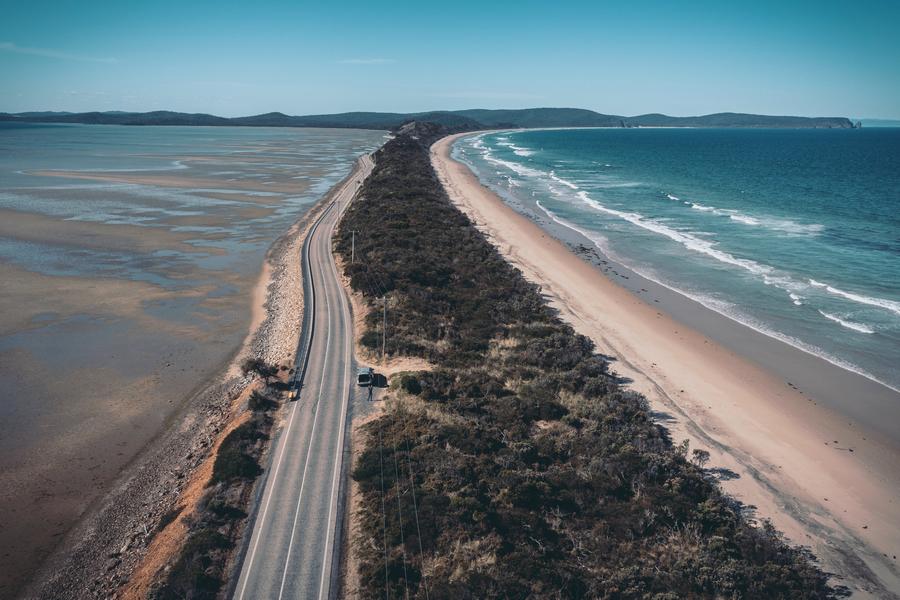
How To Take Perfect Pictures Of The Southern Lights In Tasmania
If you want to see the southern lights in Tasmania, you need a long exposure on a camera because your eyes might not do justice.
These beautiful lights display an array of dazzling and flickering colours that are impossible to perfectly capture with the eyes because they are barely visible but can be captured on camera.
Using a camera to capture the Tasmanian southern lights perfectly represents the lights. The camera can catch the different colours that splash across the sky.
The Tasmanian southern lights are a photographic opportunity to capture a colourful sky display; this is not a point-and-shoot situation but requires careful camera balancing and stillness to get a good shot.
To take good photos of the southern lights in Tasmania, you’ll need an excellent DSLR camera or a Cortex camera, or to download and install the Northern Lights Photo Taker on your smartphone. The camera is mounted on a tripod and pointing south.
If you’re having trouble figuring out how to set your camera, follow the steps below:
Step 1: Set Up Your Camera
It’s very important to position your camera well if you want to see the bright southern lights. Place your camera on the tripod stand to keep it still and in perfect balance. Then you set your camera’s lens to the widest possible angle.
Step 2: Adjust Your Camera Settings
You want to get the best picture you can of the southern lights, so you need to make sure your camera settings are perfect. You should do the following:
- Set the aperture to allow as much light as possible into the camera. A good f-stop is 2.8.
- Set your camera’s ISO to the highest setting; an ISO range of 800 to 3200 is ideal.
- Set your camera’s shutter speed to 30 seconds. This, however, depends on how bright and clear the southern lights of Tasmania appear from where you are. If the light is bright and clear, you only need your shutter open for a short amount of time. If the light is dim, you need your shutter open for a longer amount of time.
- Put your camera in manual mode and set the focus to infinity.
Step 3: Take A Shot!
After you’ve done all of this, find a good place to look at the view, like one of the places above. Then you’re ready to take pictures of the brightest and even dimmest southern lights in Tasmania.
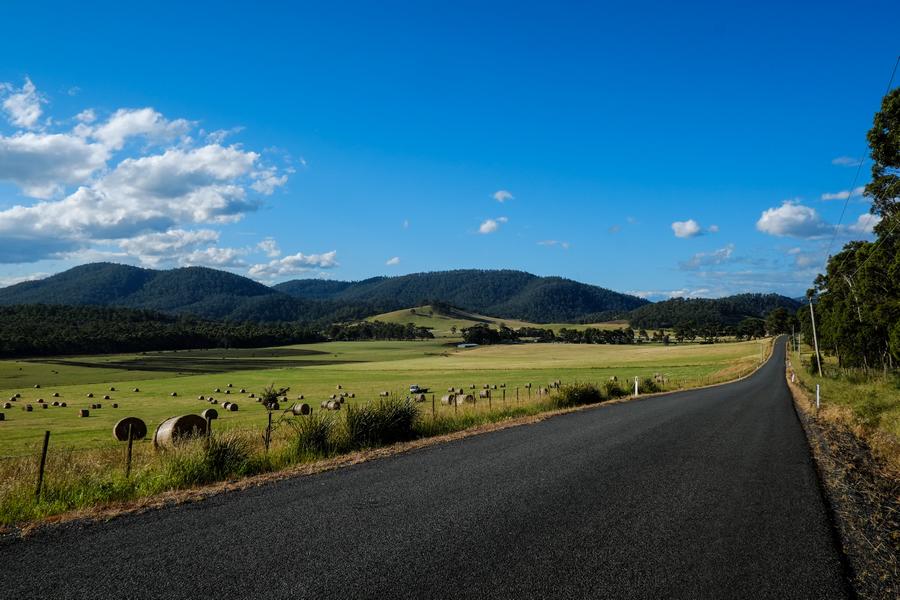
The Differences Between the Southern Lights (Aurora Australis) And The Northern Lights (Aurora Borealis)
The northern lights, also called the aurora borealis, are more common than the southern lights, which are mostly seen in Tasmania. Some people confuse the two lights, and others see them as the same. This table illustrates some of the differences between these two lovely lights:
| Southern lights | Northern lights |
| The Southern lights are also known as Aurora Australis. | The Northern lights are also known as the aurora borealis. |
| They occur in the southern hemisphere at the southern pole. | They are found in the northern hemisphere’s northern pole. |
| Eaglehawk Neck in Tasmania, Mount Wellington in Hobart, and Mount Nelson in Hobart are the best places to see the lights. | They can be seen best from Gotta Lighthouse in Iceland, Churchill in Canada, and Aurora Sky Station in Sweden. |
Fun Facts:
• The southern lights in Tasmania are only visible at night and are not visible during the day. Because its brightest displays during the winter usually last for four hours between 10 pm and 2 am, only those who can stay awake at night can capture the stunning scenery.
• The southern lights in Tasmania are not only beautiful lights in the sky but they are also accompanied by a hissing sound, similar to that of a snake, followed by distinct clapping sounds.
Frequently Asked Questions
Where In The North Can I See the Tasmanian Southern Lights?
Even though the best place to see the southern lights in Tasmania is near the south pole, there are a few locations in the north where they can be observed. These include the hill next to the Highfield Historic Site, the Highland Lakes, and Braddon’s Lookout.
Can I See The Southern Lights During The Day In Tasmania?
No, just like you can’t see a bright star in the sky during the day, the southern lights in Tasmania are not visible during the day. However, the southern lights are brighter and more transparent during the darkest nights.
Which Is Better, The Northern Lights Or The Southern Lights?
The only difference between the northern lights and the southern lights is the region in which they appear. One is not superior to the other.
Final Thoughts
One of life’s most exhilarating experiences is seeing the southern lights in Tasmania. We hope you enjoy your trip to Tasmania and that you get to see the beautiful, vibrant lights and capture them on camera.
More Pages On Other Areas
Vacations are fun and can be a wonderful way for couples to spend quality time together. As a couple spends time together, they create memories to cherish forever. However, one question often arises:...
Recreational fishing in many parts of Victoria requires a licence that enables you to have fun while legally carrying out your non-commercial fishing activities. However, there's often a lot of...


